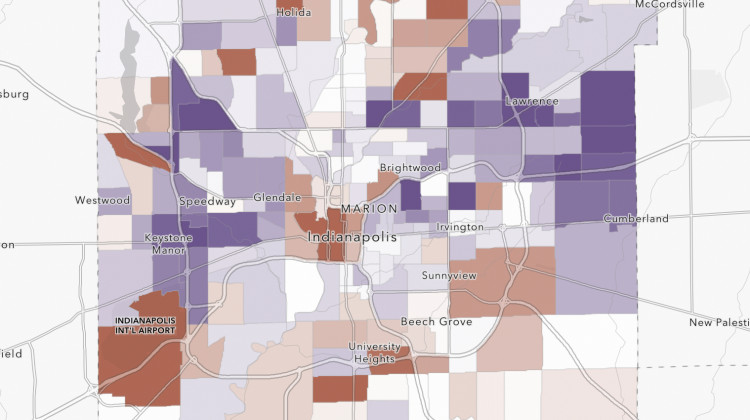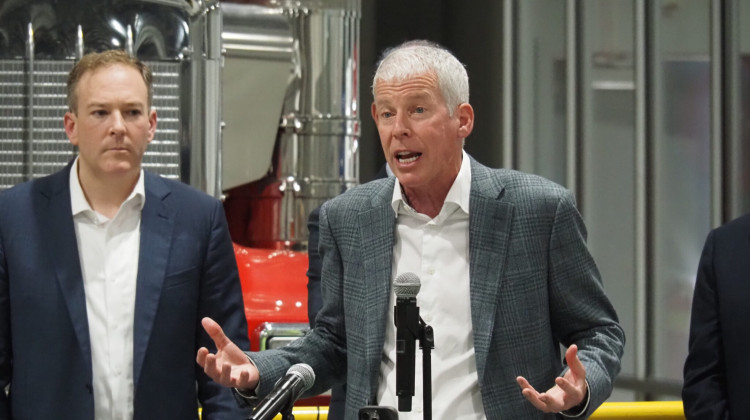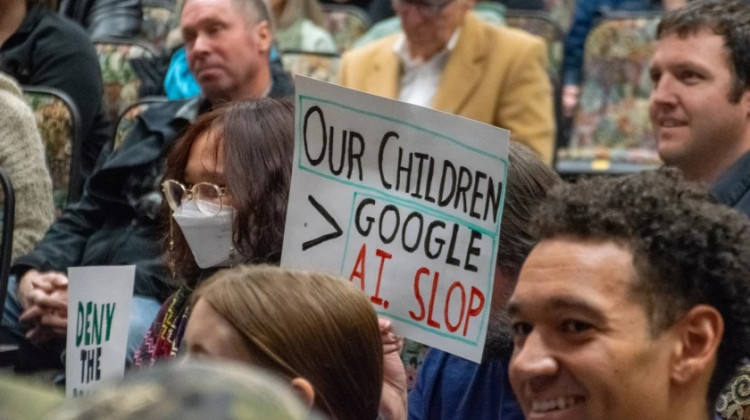
A map showing regions of the city with higher eviction rates over average. Brown regions show an increase while purple shows a decrease.
Courtesy of SAVIA small group of landlords is responsible for a majority of Indianapolis evictions, according to a new report.
The report, produced by the Indianapolis-based community data center SAVI, found that between January and June of 2022 roughly two-thirds of evictions came from large apartment complexes.
Matt Nowlin is with the Polis Center at Indiana University-Purdue University Indianapolis and worked on the report. He said just 14 percent of renters live in large apartment complexes – making the higher eviction rate among those buildings stand out.
“It really says a lot about the kind of owners and companies that file evictions more frequently,” he said. “You kind of know by definition that if you own a $20 million apartment complex you’re not a mom-and-pop operation at that point.”
Nowlin said that both large corporate and out-of-state owners file evictions at much higher rates compared with other owners.
“There’s something about the business model that encourages evictions,” Nowlin said. “There’s definitely elements of our policy landscape that encourage eviction filings as a routine business for these folks.”
In the report, Nowlin and his co-author Erik Steiner write evictions are “increasingly being used as a debt-collection strategy by corporate owners.”
The report even highlights some of these corporate owners with the biggest eviction outputs: Indianapolis-based Birge and Held, New York-based equity firm Aion Partners, and Nashville-based Covenant Capitol Group. Aion Partners properties saw an eviction rate of 22 percent.
The report only covers the first half of the year – meaning that the eviction rates for the city and for individual owners will only go up as more evictions are filed.
In 2018, EvictionLab listed Marion County’s eviction rate as 21.1 percent.
Nowlin said for the first half of 2022 Indianapolis has an eviction rate of roughly 6.7 percent, a lower rate he attributes to federal rental assistance.
But, as both state and Indianapolis rental assistance programs have paused, Nowlin said it’s possible the eviction rate will rise faster than it has.
Other patterns from the report include that owners with the most habitability complaints also filed evictions at higher rates than others.
Nowlin said if policymakers see the high filings as a problem there are clear solutions – namely making evictions take longer and more expensive for owners.
“The levers you can pull here are the difficulty with which you obtain an eviction and the cost of it,” he said. “If it’s no longer a cost-effective business model then I don’t think it would be as attractive to businesses. It’s not a super complicated policy dynamic.”
 DONATE
DONATE






 Support WFYI. We can't do it without you.
Support WFYI. We can't do it without you.